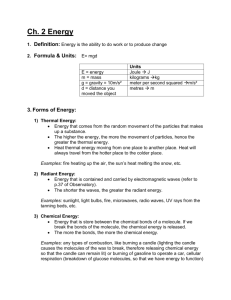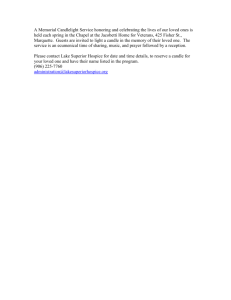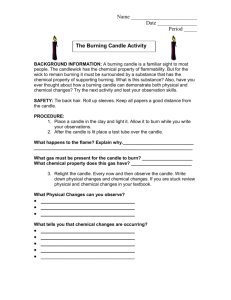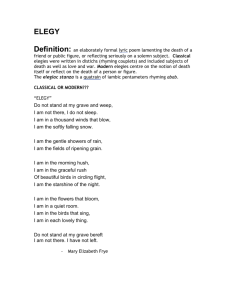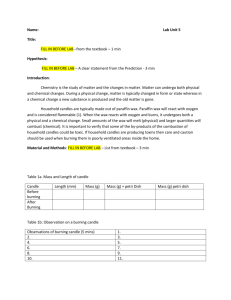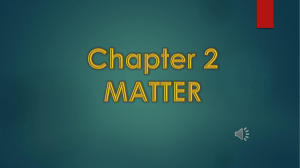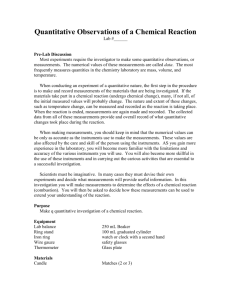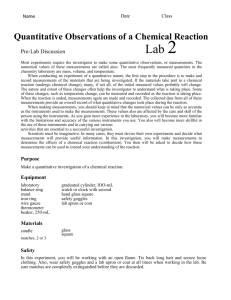Observations of a Burning Candle * Make *up Assignment
advertisement
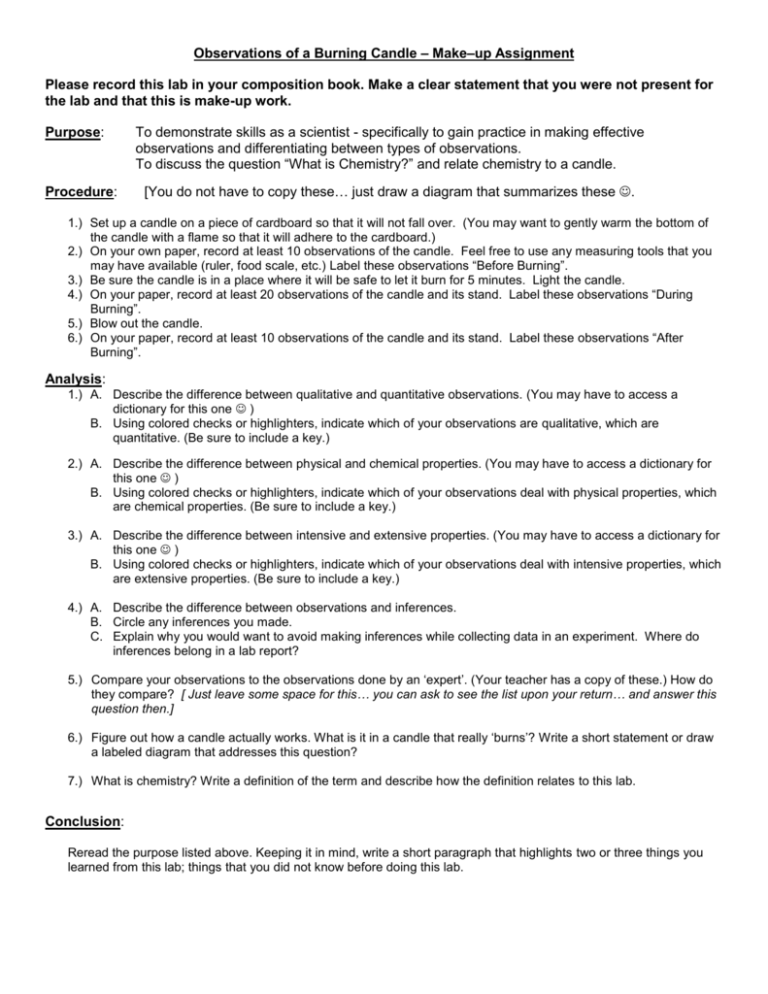
Observations of a Burning Candle – Make–up Assignment Please record this lab in your composition book. Make a clear statement that you were not present for the lab and that this is make-up work. Purpose: Procedure: To demonstrate skills as a scientist - specifically to gain practice in making effective observations and differentiating between types of observations. To discuss the question “What is Chemistry?” and relate chemistry to a candle. [You do not have to copy these… just draw a diagram that summarizes these . 1.) Set up a candle on a piece of cardboard so that it will not fall over. (You may want to gently warm the bottom of the candle with a flame so that it will adhere to the cardboard.) 2.) On your own paper, record at least 10 observations of the candle. Feel free to use any measuring tools that you may have available (ruler, food scale, etc.) Label these observations “Before Burning”. 3.) Be sure the candle is in a place where it will be safe to let it burn for 5 minutes. Light the candle. 4.) On your paper, record at least 20 observations of the candle and its stand. Label these observations “During Burning”. 5.) Blow out the candle. 6.) On your paper, record at least 10 observations of the candle and its stand. Label these observations “After Burning”. Analysis: 1.) A. Describe the difference between qualitative and quantitative observations. (You may have to access a dictionary for this one ) B. Using colored checks or highlighters, indicate which of your observations are qualitative, which are quantitative. (Be sure to include a key.) 2.) A. Describe the difference between physical and chemical properties. (You may have to access a dictionary for this one ) B. Using colored checks or highlighters, indicate which of your observations deal with physical properties, which are chemical properties. (Be sure to include a key.) 3.) A. Describe the difference between intensive and extensive properties. (You may have to access a dictionary for this one ) B. Using colored checks or highlighters, indicate which of your observations deal with intensive properties, which are extensive properties. (Be sure to include a key.) 4.) A. Describe the difference between observations and inferences. B. Circle any inferences you made. C. Explain why you would want to avoid making inferences while collecting data in an experiment. Where do inferences belong in a lab report? 5.) Compare your observations to the observations done by an ‘expert’. (Your teacher has a copy of these.) How do they compare? [ Just leave some space for this… you can ask to see the list upon your return… and answer this question then.] 6.) Figure out how a candle actually works. What is it in a candle that really ‘burns’? Write a short statement or draw a labeled diagram that addresses this question? 7.) What is chemistry? Write a definition of the term and describe how the definition relates to this lab. Conclusion: Reread the purpose listed above. Keeping it in mind, write a short paragraph that highlights two or three things you learned from this lab; things that you did not know before doing this lab.


